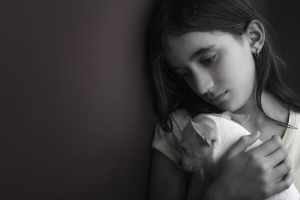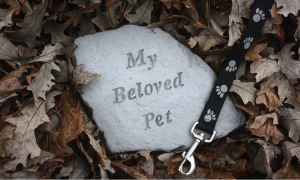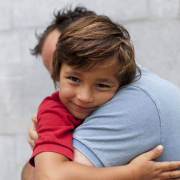A Parent’s Guide to Pet Loss & a Child’s Grief
Loss is part of life. We all will face the death of a loved one at some point in our lives; and, while we may understand that loved ones will pass, death is never easy to process. No one deals with loss the same way. Death—and how we cope with it—is incredibly personal. While time is unfortunately the great healer, that permanent loss can be incredibly traumatic…especially for children.
Grief is a process. There are stages of grief that must be experienced to allow the mind to accept a loss, and, sometimes, those steps can happen like rewinding a tape. Sometimes the cycle may seem completed, when really, more processing must occur.
 Children also experience grief, although they don’t always process their loss in the same way as adults. For kids, the first loss they may experience is the death of a beloved pet. Breaking the news that a pet has died can be a subject parents might wish to avoid with a little white lie…but the truth—while it hurts—must be told to children. While the loss can bring emotional devastation, it also can bring ambivalence. Reactions may vary, and parents should be prepared.
Children also experience grief, although they don’t always process their loss in the same way as adults. For kids, the first loss they may experience is the death of a beloved pet. Breaking the news that a pet has died can be a subject parents might wish to avoid with a little white lie…but the truth—while it hurts—must be told to children. While the loss can bring emotional devastation, it also can bring ambivalence. Reactions may vary, and parents should be prepared.
According to the Association for Pet Loss and Bereavement (APLB), how a child handles a loss depends on their age. Death isn’t understood on the same level at every age, and young children don’t perceive death in the same way as adults.
While young elementary age children know death is permanent, they don’t know why it happened. According the HealthyChildren.org, they may blame themselves. Parents need to reinforce that there was nothing that the child did to cause the death. Children also might need more emotional security and comfort from parents.
However, preschoolers see death as something that isn’t forever. According to the Academy of Child and Adolescent Psychiatry, a preschoolers understanding of death as temporary is “reinforced by cartoon characters who die and come to life again.” They may need more explanations from parents and may continue to ask about their beloved friend.
Older kids understand death in the same way as adults and may cycle through the stages of grief: denial and isolation, anger, bargaining, depression, and, finally, acceptance. However, every child may experience these stages in different ways.
 Parents can help children cope with loss by offering support. Allow kids to grieve. Let them be involved in a ‘funeral’ or memorial. If they express a need to say goodbye, allow them.
Parents can help children cope with loss by offering support. Allow kids to grieve. Let them be involved in a ‘funeral’ or memorial. If they express a need to say goodbye, allow them.
Some children may cry for days. They may have trouble eating or sleeping. Grief can be consuming and strong. If parents feel that a child is succumbing to depression, they should consult with a pediatrician to discuss the situation. Sometimes, a child may need to speak with a therapist to move through their grief and emotions.
APLB also advises parents to encourage children to draw pictures of their pets or parents and kids also can honor the pet with a memorial photo album. If the pet has been cremated and the family has kept the ashes, kids may help decide where to place the urn in the home. Or the family may discuss where to scatter the ashes. Involve kids in the process, as long as they wish to be included.
Some families also may decide to make a monetary gift to an animal charity in the name of their pet. Talk as a family about ways to honor the family’s best friend.
Death is difficult at any age. However, for kids the idea of death can be confusing, scary and heart wrenching. The death of a pet may be the first loss a child experiences, and that loss may hit them extremely hard. While every child experiences grief and loss in their own way, the only true cure for heartbreak is time.
Written by Sloan McKinney



